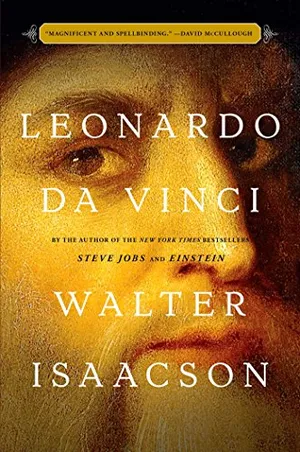A New Leonardo da Vinci Biopic Is Coming to the Big Screen
The film will be an adaptation of Walter Isaacson’s biography of the Renaissance painter, scientist and inventor
:focal(1800x1200:1801x1201)/https://tf-cmsv2-smithsonianmag-media.s3.amazonaws.com/filer_public/5f/7b/5f7bb454-c4ac-4868-941f-5d220f48063e/gettyimages-811820104.jpg)
Leonardo da Vinci is getting the Hollywood treatment: The Italian Renaissance artist, who lived during the late 15th and early 16th centuries, will be the subject of a forthcoming biopic from Universal Pictures. The studio recently confirmed that Andrew Haigh, best known for All of Us Strangers (2023), will direct the production, as Variety’s Tatiana Siegel reports.
The film will be based on Walter Isaacson’s 2017 biography of Leonardo, a sprawling tome based largely on the polymath’s notebooks.
“It remains unclear whether it will touch on just one aspect of the artist’s life or the whole thing,” writes ARTnews’ Alex Greenberger. “Isaacson’s book”—which is more than 600 pages long—“traces the full arc of Leonardo’s career, including his making of the Mona Lisa and his scientific experiments.”
Leonardo da Vinci
Based on thousands of pages from Leonardo da Vinci’s astonishing notebooks and new discoveries about his life and work, Walter Isaacson “deftly reveals an intimate Leonardo” (San Francisco Chronicle) in a narrative that connects his art to his science. He shows how Leonardo’s genius was based on skills we can improve in ourselves, such as passionate curiosity, careful observation, and an imagination so playful that it flirted with fantasy.
Soon after Isaacson’s biography debuted, Paramount bought the rights to the book—and even started working with actor Leonardo DiCaprio to turn it into a film. However, that project never came to fruition, and Universal bought the rights last year. The company then selected Oscar-winning screenwriter Christopher Hampton to write the screenplay.
This film will be Universal’s second big-screen adaptation of an Isaacson book: In 2015, the studio released Steve Jobs, which is based on the author’s 2011 biography.
Universal’s production also isn’t the only film focused on Leonardo currently in the works: In November, PBS will air Ken Burns’ two-part documentary series, which “examines the Italian polymath’s unrelenting drive to understand the world and the enduring influence of his legacy,” as Smithsonian magazine’s Julia Binswanger writes. (Leonardo was the first non-American subject material for Burns, who co-directed the film with daughter Sarah Burns and son-in-law David McMahon.)
Born in 1452 to unwed parents, Leonardo spent his childhood on his father’s family’s estate. At around age 14 or 15, he began apprenticing under Florentine artist Andrea del Verrocchio, who taught him how to paint and sculpt. The teenager also studied under Antonio Pollaiuolo, who ran a nearby workshop.
Later, Leonardo began working independently in Florence, where he made pencil and pen sketches of objects such as military weapons and pumps.
In 1482, Leonardo moved to Milan, where he lived and worked for 17 years. The city’s duke, Ludovico Sforza, employed him as a painter, sculptor and designer of court festivals. He also often weighed in on technical matters as an engineer.
Leonardo created one of his best-known works, The Last Supper, during his time in Milan. Painted in the 1490s, the work depicts Jesus and his disciples breaking bread the night before the crucifixion. That masterpiece is located in the refectory of the Santa Maria delle Grazie monastery in Milan, which has been a UNESCO World Heritage site since 1980.
Between 1500 and 1508, Leonardo returned to Florence—where he painted the Mona Lisa—before moving back to Milan for several years. During his second stint in the city, he became engrossed in scientific study, with a particular interest in anatomy, physiology, math, geology and botany. The polymath spent his final years in France, living near Amboise on the Loire River and working under Francis I as a painter, architect and engineer.
Leonardo’s sexuality has long been a matter of debate among historians and other onlookers (including Sigmund Freud). Isaacson’s biography leans into the idea that Leonardo was gay, and it remains to be seen whether or how the forthcoming film will tackle this subject. However, as Queerty’s Cameron Scheetz writes, Haigh is “one of our most prolific LGBTQ writer-directors working today,” adding that many of his previous projects have examined queer themes.
A Note to our Readers
Smithsonian magazine participates in affiliate link advertising programs. If you purchase an item through these links, we receive a commission.
/https://tf-cmsv2-smithsonianmag-media.s3.amazonaws.com/accounts/headshot/SarahKuta.png)

/https://tf-cmsv2-smithsonianmag-media.s3.amazonaws.com/accounts/headshot/SarahKuta.png)